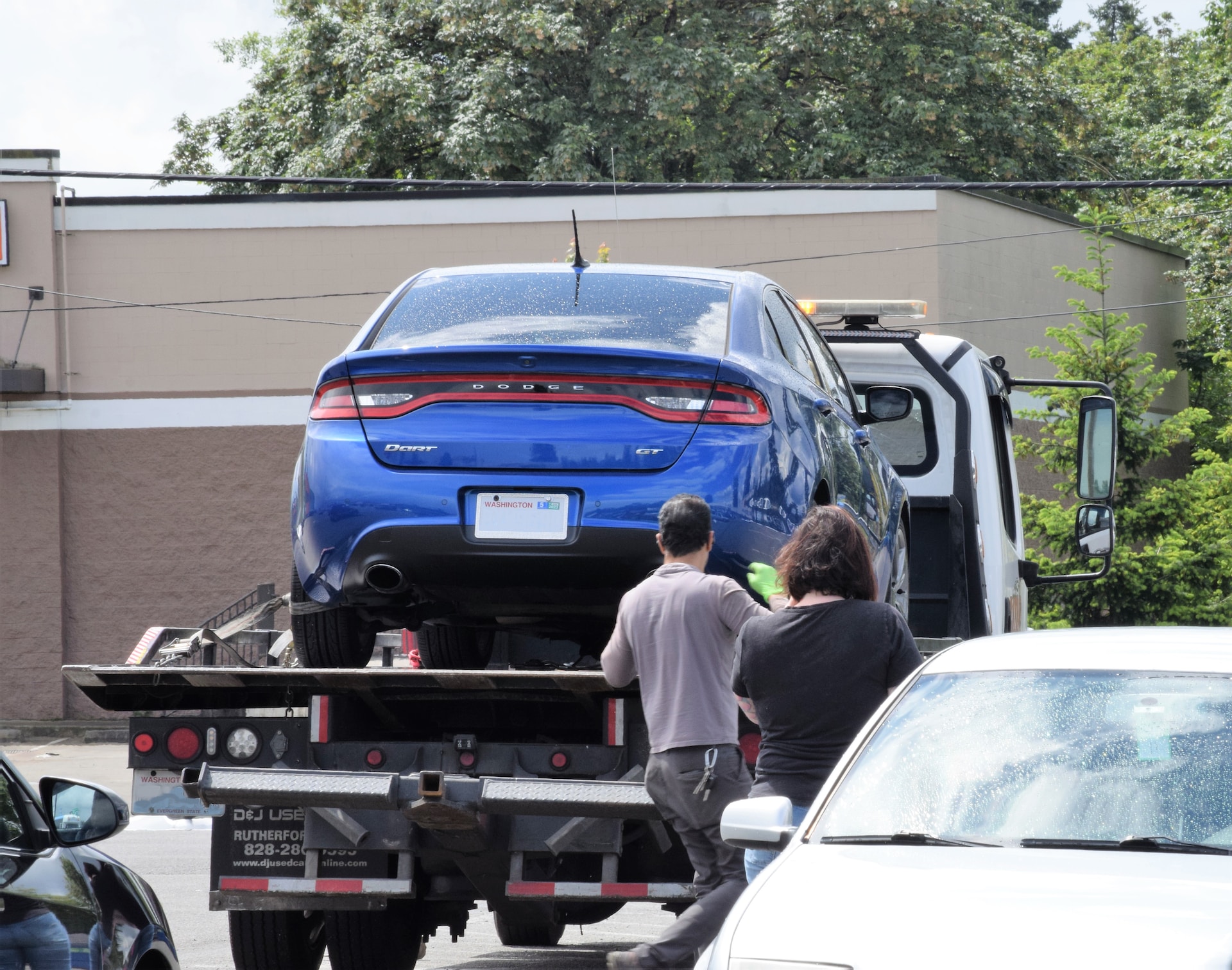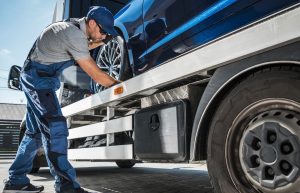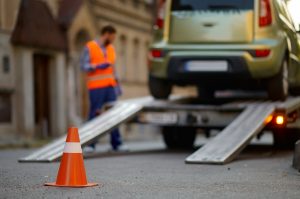Hey there, fellow travelers and gear haulers! I’m the proud owner of Green Light Towing Service right here in Virginia Beach, VA, and – with over 25 years in the towing and transport service – I’m thrilled to share a slice of wisdom on the art of towing. Whether you’re prepping for an epic cross-country journey or gearing up for a leisurely weekend retreat, understanding the ins and outs of towing can seriously elevate your game.
And hey, if you’re ever in a bind around Virginia Beach, Chesapeake, or Norfolk, give us a shout at (757) 938-3378—we’re the friendly local heroes you can count on for a tow or a helping hand.
What is Towing?
Towing, in its simplest form, involves pulling a secondary vehicle or trailer using a primary vehicle. This is facilitated by a tow hitch, a device that securely connects the two vehicles. Knowing your vehicle’s towing capacity is fundamental, as it dictates the maximum weight your vehicle can safely tow.
Types of Towing
Whether you find yourself stranded on the side of the road or need assistance moving a heavy load, towing services come to the rescue in various situations. From traditional roadside assistance to specialized towing for unique situations, there’s a towing solution for every need. In this comprehensive guide, we’ll explore different types of towing services to help you understand your options better.
1. Emergency Roadside Towing
Emergency roadside towing is the most common type of towing service. It comes to your aid when your vehicle breaks down, experiences a flat tire, runs out of fuel, or faces other non-collision issues.
When you’re stuck on the roadside, a towing professional arrives equipped to assess and resolve your vehicle’s issue. They can tow your car to a nearby repair shop or your preferred destination.
2. Flatbed Towing
Flatbed towing involves transporting vehicles on a flat, level surface. This method is popular for long-distance towing and for transporting luxury or vintage cars that require extra care.
A flatbed tow truck uses a hydraulic system to lower a flat platform to the ground. Your vehicle is then loaded onto the platform and securely strapped in place for safe transport.
3. Wheel-Lift Towing
Wheel-lift towing is a method where a tow truck lifts one end of your vehicle off the ground by its wheels. It’s commonly used for short-distance tows.
The tow truck positions itself behind your vehicle, and a metal yoke is placed under the front or rear wheels. The yoke lifts the wheels off the ground, allowing the tow truck to move your vehicle to its destination.
4. Heavy-Duty Towing
Heavy-duty towing is designed for large vehicles like buses, RVs, and industrial equipment. These specialized tow trucks can handle substantial weight and provide the necessary power for towing heavy loads.
Heavy-duty tow trucks are equipped with powerful winches and strong towing capabilities. They can efficiently tow oversized vehicles and machinery, making them ideal for commercial and industrial situations.
5. Motorcycle Towing
Motorcycle towing is a specialized service catering to two-wheeled vehicles. It requires unique equipment to ensure the safety of the motorcycle during transport.
Tow trucks specifically designed for motorcycles use a cradle or trailer to secure the bike in place. This prevents any damage to the delicate parts of the motorcycle, offering a safe and reliable towing option.
6. Off-Road Recovery
Off-road recovery towing is for vehicles stuck in challenging terrains such as mud, sand, or snow. It involves rescuing vehicles that are off the beaten path.
Tow trucks equipped for off-road recovery have specialized features like four-wheel drive and robust winches. They can reach remote locations to pull out vehicles stuck in challenging conditions.
Looking for a professional towing service to move your car, truck, or equipment cross country? Consider our long distance towing service…
Towing Safety Tips
1. Check Your Vehicle’s Towing Capacity
Understanding your vehicle’s towing capacity is the cornerstone of safe towing. Exceeding this limit can lead to engine strain, reduced control, and potential safety hazards. Refer to your vehicle’s manual for accurate towing specifications.
2. Inspect Your Trailer Equipment
- Tow Hitch Inspection:
- Ensure the tow hitch is firmly secured to your vehicle. Any looseness or play can compromise stability.
- Lubricate moving parts to prevent rust and ensure smooth functionality.
- Lights and Brakes:
- Regularly check that all lights on the trailer are functioning correctly, including brake lights and turn signals.
- Confirm the trailer’s braking system is in optimal condition, as it plays a vital role in ensuring a safe stopping distance.
3. Distribute Weight Evenly
Proper weight distribution is critical for towing stability. Load heavier items towards the front of the trailer to prevent swaying during transit. Utilize a tongue weight scale to ensure an appropriate balance between the towing vehicle and the trailer.
4. Drive Cautiously
- Speed Control:
- Towing alters the dynamics of your vehicle. Drive at moderate speeds, staying within the recommended limits for towing.
- Reduce speed when navigating curves and be cautious on uneven terrain.
- Braking Considerations:
- Increase your following distance to allow for extended braking time.
- Downshift on descents to avoid relying solely on brakes, preventing overheating and brake failure.
5. Practice Backing Up
Mastering the art of backing up with a trailer is essential, especially in tight spaces like campgrounds or parking lots. Practice in an open area, honing your skills in steering and reversing with precision.
MUST READ:
Preparing for a Towing Adventure
1. Gather Necessary Equipment
- Tow Hitch and Ball Mount:
- Choose a tow hitch that aligns with your vehicle’s specifications. Ensure the ball mount is compatible and securely tightened.
- Opt for a hitch with a weight distribution system for enhanced towing stability.
- Safety Chains:
- Attach safety chains to both the towing vehicle and the trailer. Cross them underneath the hitch to create a cradle in case of a hitch failure.
- Trailer Wiring Harness:
- Ensure the trailer is equipped with a functional wiring harness to synchronize brake lights and turn signals with the towing vehicle.
- Towing Mirrors:
- Invest in towing mirrors for improved visibility. These mirrors extend beyond the standard view, providing a clear line of sight around the trailer.
2. Perform a Pre-Trip Inspection
- Tire Pressure:
- Check and adjust tire pressure on both the towing and towed vehicles, including the trailer.
- Under-inflated tires can lead to instability, while over-inflated tires may compromise traction.
- Lights and Signals:
- Conduct a thorough check of all lights on the towing vehicle and the trailer. Replace any bulbs that are dim or non-functional.
- Ensure the trailer’s brake lights, turn signals, and hazard lights are in proper working order.
- Trailer Tires:
- Inspect the condition and tread depth of the trailer tires. Uneven wear may indicate alignment issues.
- Carry a spare tire for both the towing vehicle and the trailer, along with the necessary tools for changing a tire.
3. Secure the Load
- Proper Loading Technique:
- Load heavier items towards the front of the trailer, distributing weight evenly.
- Use tie-downs and straps to secure items within the trailer, minimizing the risk of shifting during transit.
- Center of Gravity:
- Identify the center of gravity for both the towing vehicle and the trailer. Keep the center of gravity low to reduce the risk of rollovers.
4. Plan Your Route
- Road Conditions:
- Research and plan your route, considering road conditions and terrain.
- Choose routes with wide lanes and minimal construction, avoiding challenging terrains when possible.
- Fueling and Rest Stops:
- Identify fueling stations along your route that can accommodate your towing vehicle and trailer.
- Plan rest stops to prevent driver fatigue, allowing for breaks and adjustments as needed.
Conclusion
And that’s the long and short of towing, my friends! Remember, it’s not just about getting from Point A to Point B; it’s about making sure you, your vehicle, and your precious cargo arrive safely and smoothly. From understanding the various towing types to embracing those essential safety practices, this guide is your trusty co-pilot to a world of towing done right.
Now, with these pro tips in your pocket, you’re all set to embark on your next towing adventure. And remember, if the road throws you a curveball in Virginia Beach, Chesapeake, or Norfolk, Green Light Towing Service is just a phone call away at (757) 938-3378. We’re here to ensure your towing experiences are nothing but green lights and smooth sailing.
Safe travels, and don’t hesitate to reach out for top-notch towing service when you need it most!




